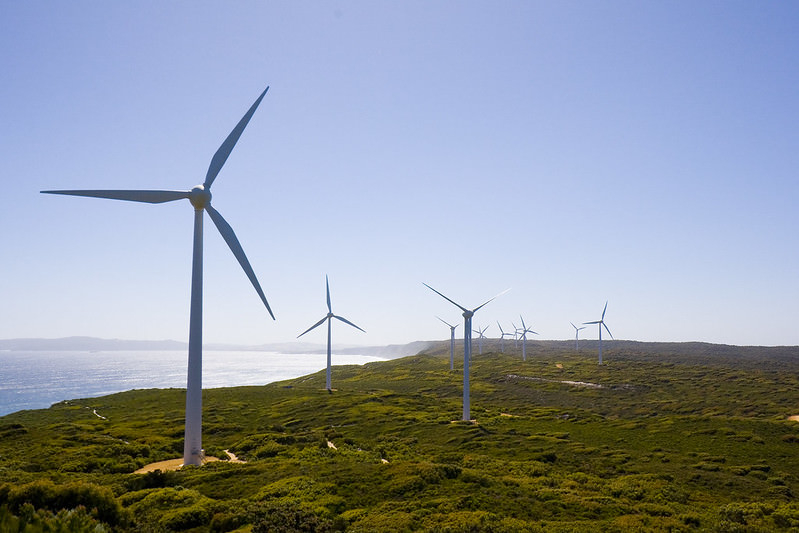Extract from Eureka Street
- Bree Alexander
- 11 May 2020
Shortly after coronavirus-related restrictions came into place in March, the Victorian government announced the lifting of a moratorium (temporary ban) on gas exploration in the state from July 2021, along with a permanent ban on fracking.

According to The Australia Institute, the internal report on which the decision was based seemingly did not include 88 per cent of potential emissions from burning the gas, despite Premier Daniel Andrews announcing that priority would be given to usage within the state. The premier also announced the creation of 6,400 related jobs, which turned out to be job years, not the number of actual jobs, as outlined by Mark Ogge of The Australia Institute in a recent webinar.
This is especially significant considering that the state will announce emissions reduction targets for both 2025 and 2030 in the coming months, a decision which has been delayed from the original 31 March deadline. This highlights a clash between science-based targets aimed to help limit global warming to 1.5 degrees Celsius and the additional injection of carbon that new gas could bring in the coming years.
Ogge also highlighted the opening of gas exploration is implicated in private interests, such as those who have voting power in the Gas Industry Social and Environmental Research Alliance (GISERA) and the impact the body has on government decisions. Its National Research Management Committee that oversees all research projects includes companies ALPNG, Origin, QGC, Santos and Pangaea Resources.
While the federal government has set a zero net emissions target by 2050, along with the states and territories and local councils in some areas, the steps that are taken to get there are vitally important. Yet there seems to be no signs of a rapid move away from fossil fuels.
The announcement of the federal ‘technology roadmap’ on 28 February, described by the Climate Council as a ‘roadmap to nowhere’, confirms that the focus is on prolonging the life of the fossil fuel industries in Australia with investments in technologies to make coal and gas ‘cleaner’ rather than transitioning to renewables at the earliest possible time. The roadmap announcement came shortly after the decision to axe almost 20 per cent of CSIRO staff, including the hydrogen research unit, hydrogen technology forming part of the proposed plan.
'What we need more than ever is visionary thinking to shape the future rather than a disproportionate focus on short-term interests.'
The federal government is seemingly looking at deals involving more fossil fuels now and renewables later, such as in the case of New South Wales. The deal, signed in January, involves NSW using more gas and coal in exchange for joint renewable investment. It is then a possibility that Victoria may be looking to follow suit in the lifting of this moratorium in what could be a setback for committing to ambitious emission reduction targets in the near future in exchange for such cooperation.
On the other hand, Victorian Minister for Energy and Climate Change, Lily D’Ambrosio, when speaking at the recent Stimulus Summit called on the federal government to create legislation to allow the states to develop offshore windfarms, highlighting the challenges for states coming up against limitations in offshore development as the waters are under the jurisdiction of the Commonwealth.
According to a report from the Climate Council, South Australia, ACT and Tasmania were leading the way in renewables in 2019, with the ACT arriving at 100 per cent renewable electricity, meaning for every watt of power consumed, it pays one back through renewable investments to five wind farms around the country. This is an example of the interconnectedness of different parts of the country in the area of energy and why levels of government working together could be so beneficial, making even more stark the differences between policies in states and territories in the current scenario. This includes the opening up of fracking exploration by the Northern Territory government late last year despite concerns for groundwater that is essential to regional communities.
The reality is a lack of leadership in the area of transition to renewables has left action to the states and territories. South Australia has announced its aim to reach net 100 per cent renewable energy by around 2030 and is currently under the Liberal National Party, while the ACT is under the Labor Party, demonstrating that the importance of this transition transcends party lines.
With the federal and state/territory consensus across political divides that this is no time for austerity due to the pandemic, it is a time to think about investments that offer longer term returns, such as renewable power stations and public transport, including fast trains.
What we need more than ever is visionary thinking to shape the future rather than a disproportionate focus on short-term interests. If the national cabinet were to extend its operations to broader questions that demand multi-level cooperation, the transition to renewable energy need to be a key area of eminent concern.
No comments:
Post a Comment